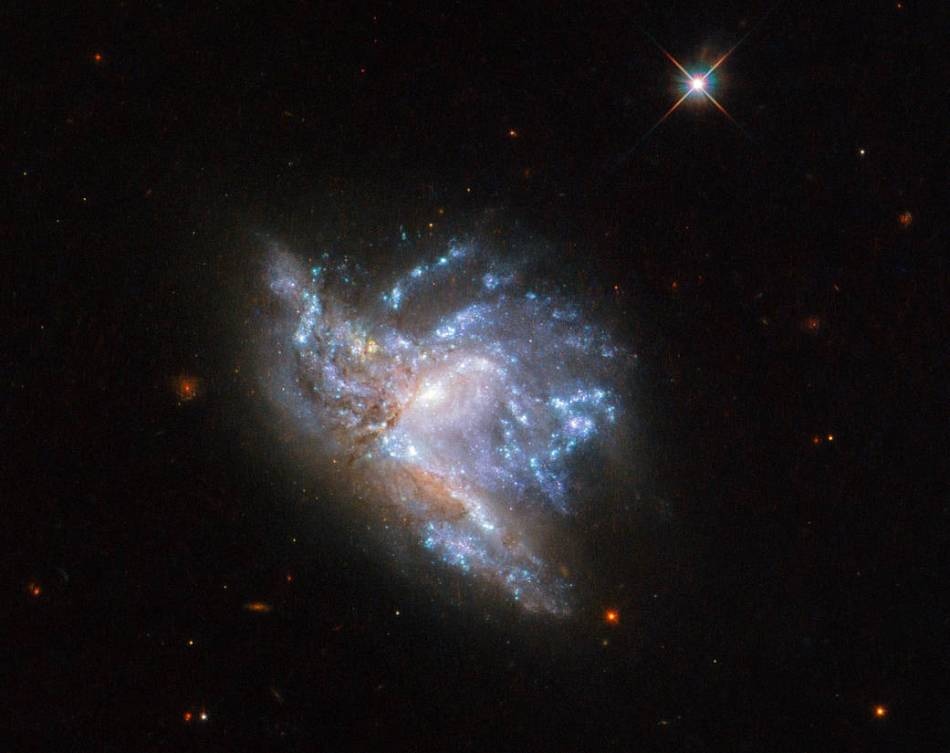Mar 11 2019
NGC 6052—a pair of colliding galaxies—is located in the constellation of Hercules, approximately 230 million light-years away. In 1784, William Herschel discovered these galaxies, which were initially categorized as a single irregular galaxy owing to their unusual shape.
 Located in the constellation of Hercules, about 230 million light-years away, NGC 6052 is a pair of colliding galaxies. (Image credit: ESA/Hubble & NASA, A. Adamo et al.)
Located in the constellation of Hercules, about 230 million light-years away, NGC 6052 is a pair of colliding galaxies. (Image credit: ESA/Hubble & NASA, A. Adamo et al.)
Conversely, it is now known that NGC 6052, in fact, contains a pair of galaxies that are in the process of colliding. The Wide Field Camera 3 on the NASA/ESA Hubble Space Telescope was used to capture this specific image of NGC 6052.
Years ago, gravity drew these two galaxies together into the disordered state which is currently seen. Within two of the original galaxies, stars presently follow new trajectories induced by the latest gravitational effects. Yet, real collisions between stars themselves are extremely rare since stars are quite small in relation to the distances between them (a large of a galaxy is actually an empty space). Ultimately, the galaxies will completely combine to form one, stable galaxy.
The Milky Way, our own galaxy, will experience an analogous collision in the future with the Andromeda galaxy—the closest galactic neighbor. Conversely, this is not anticipated to occur for about four billion years.
Earlier, this object was idealized by Hubble Space Telescope with its outdated Wide Field and Planetary Camera 2, or WFPC2 for short. That image was released earlier in 2015.